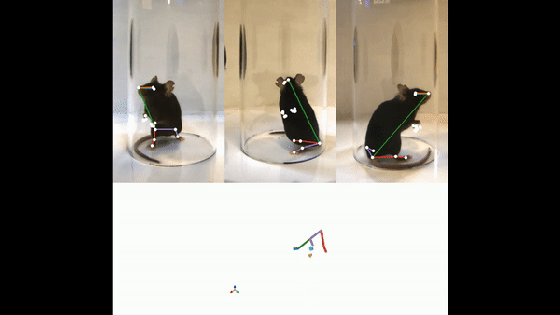Research line: Cerebro-cerebellar development
Finely coordinated movements come natural to most of us; we can maintain balance and walk around, professional athletes control their bodies with extreme precision, and we perform everyday movements subconsciously and with ease. The crucial importance of this movement coordination becomes painfully clear in patients suffering from movement disorders such as cerebellar ataxia, dystonia and cerebral palsy. However, exactly how we are able to control our movements, and what exactly goes awry in these patients, remains largely unknown. This gap in our understanding prevents us from finding treatments for thousands of patients suffering from some form of motor coordination disease in The Netherlands.

Our research focuses on the structure, function and development of neural networks involved in movement coordination, with a focus on the development of the cerebellum and its connections. Connections between forebrain and cerebellum develop early in life, and early adverse life events can potentially damage these connections with life-long consequences. By investigating the network structure and function of the motor system we aim to contribute to the understanding of movement control and ultimately to the development of new treatments for our patients suffering from motor control diseases.

We use automated movement tracking to investigate movements and movement deficits in detail in 3D.
Key publications uitklapper, klik om te openen
- Witter L, Rudolph S, Pressler RT, Lahlaf S, Regehr WG. Purkinje cell collaterals enable output signals from the cerebellar cortex to feed back to Purkinje cells and interneurons. Neuron. 2016, 91(2):312-319
- Witter L, Rudolph S, Pressler RT, Lahlaf S, Regehr WG. Purkinje cell collaterals enable output signals from the cerebellar cortex to feed back to Purkinje cells and interneurons. Neuron. 2016, 91(2):312-319
- Guo C, Witter L, Rudolph S, Elliot HL, Ennis KA, Regehr WG. Purkinje Cells Directly Inhibit Granule Cells in Specialized Regions of the Cerebellar Cortex. Neuron. 2016, 91(6):1330-1341
- Witter L, Canto CB, Hoogland TM, De Gruijl JR, De Zeeuw CI. Strength and timing of motor responses mediated by rebound firing in the cerebellar nuclei after Purkinje cell activation. Frontiers in Neural Circuits. 2013, 7:133
- Hoebeek FE, Witter L, Ruigrok TJH, De Zeeuw CI. Differential olivo-cerebellar cortical control of rebound activity in the cerebellar nuclei. Proceedings of the National Academy of Sciences. 2010, 107(18):8410-8415
- Khalil AJ, Mansvelder HD, Witter L. Mesodiencephalic junction GABAergic inputs are processed separately from motor cortical inputs in the basilar pons. iScience. 2022, 25(7):104641
Funding & Grants uitklapper, klik om te openen
- NWO-Gravitation (2019): BRAINSCAPES
- ZonMW Offroad (2019): Transfecting single neurons with rabies virus to obtain a detailed description of the rodent and human connectomes
- NWO-VENI (2016): Do the pontine nuclei form the heart of voluntary motor control?
- Leonard & Isabella Goldenson Fellow (2014): Impact of Purkinje cell collaterals on synchrony
Collaborations uitklapper, klik om te openen
We work together with:
Children's Movement Center // UMC Utrecht Wilhelmina Children's Hospital
Neonathology Research // UMC Utrecht Wilhelmina Children's Hospital
Contact uitklapper, klik om te openen
PI: Laurens Witter, personal profile page
Mail: l.witter-2@umcutrecht.nl
Twitter: @gigaseal
Github: LWitter
Orcid: 0000-0003-2357-0578
